Plan your Pingyao tour? The Ancient City of Ping Yao with its associated temples of Shuanglin and Zhenguo has preserved authentically the elements and features that reflect the Han cities from the 14th to 20th century, including the overall layout, architectural style, building materials, construction craftsmanship and traditional technology, as well as the internal relations between the overall cityscape and the elements. Ancient City of Ping Yao truly reflects the traditional dwelling form and lifestyle of the Han people (from unesco.org).
So along with Pingyao Ancient City and Shuanglin Temple, Zhenguo Temple (镇国寺) is listed as a UNESCO World Cultural Site.
How to get to Zhenguo Temple
Zhenguo Temple is located in Haodong Village (郝洞村)15km to the northeast of Pingyao Ancient City. At the time of my writing, there is no direct public transport connecting the old city of Pingyao and Zhenguo Temple. Basically you need to take a taxi or rent a private vehicle to visit Zhenguo Temple.
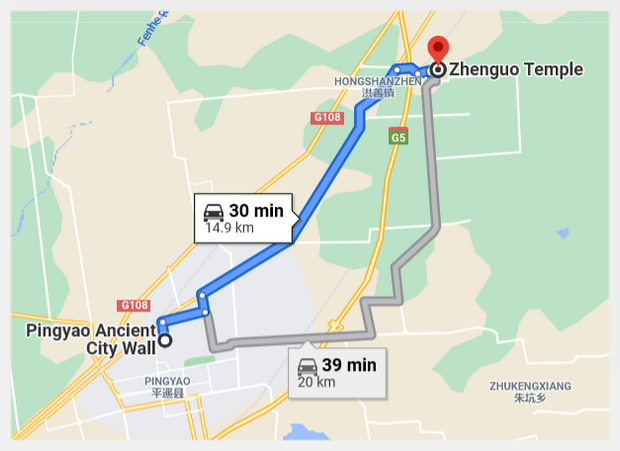
There is a Bus No 9 starting from Pingyao Station going Haodong Village. I’ve never had any experience taking the bus line and it’s said taking the Bus 9 is daunting and time-consuming. My suggestion is to take a taxi or talk to your lodging hotel to arrange a private car for a small amount of money. Or you may share a taxi or car if you travel in a party, making the thing much easier.
Entrance Fee: 25 yuan
Opening Hours: 08:30-18:00(summer); 08:30-17:00(winter)
ABC of Zhenguo Temple
Zhenguo Temple faces to the south with the Hall of Heavenly Kings (Tianwang Hall) as its gate. After the Tianwang Hall are the two main halls – Wanfo Hall and Sanfo Hall which form two courtyards in between. On both sides of the two courtyards are several side halls. There is a high wall circling the entire compound.
Wanfo Hall is the oldest building in Zhenguo Temple dating back to the year 963 in the short-lived North Han Dynasty. Originally, the temple was named as Jincheng Temple. In the year 1541 in Ming Dynasty, the temple was renamed as the present name – Zhenguo Temple.
Zhenguo Temple is noted for Chinese traditional wooden structures featuring very large brackets holding up the roof and flying eaves as well as the sculptures inside the halls.
Virtual Tour of Zhenguo Temple
Follow me to enter the 1000-year-old Buddhist temple.
This is the Temple’s pailou – Chinese traditional archway and behind the pailou is a large parking lot and a clean public toilet.
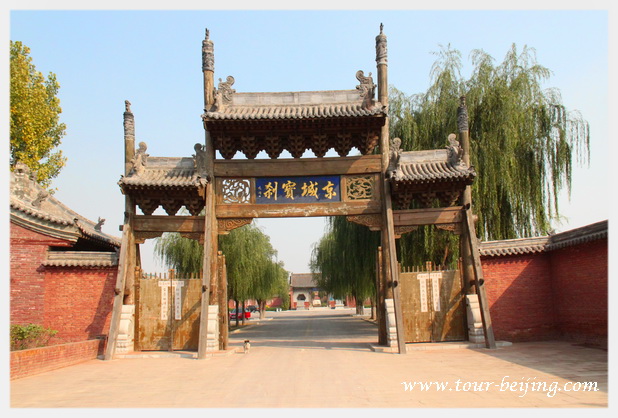
The ticketing office is by the outer entrance to the temple. RMB 25 per person. This is the entrance to the temple complex.
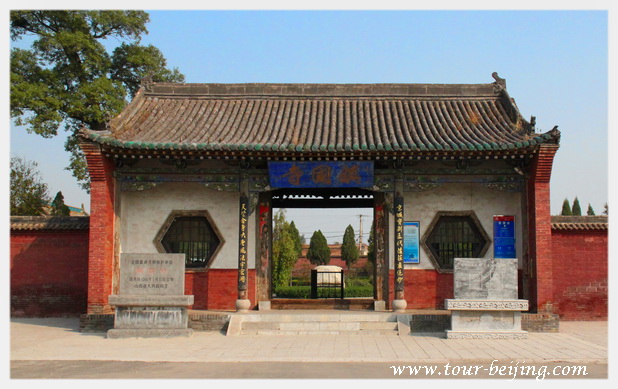
Once you enter the entrance above, you’ll see a spacious and open compound, again you’ll see the real gate to the temple and the gate building is known as Tianwang Hall( Heavenly King’s Hall.
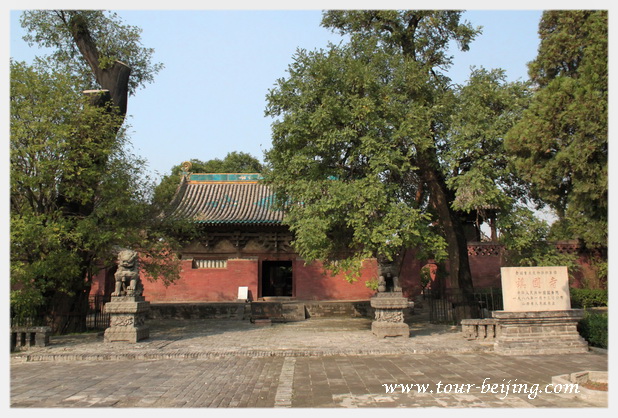
The hall was built in Yuan Dynasty ( 1271 – 1368 ) and rebuilt for many times. Inside the hall are statues of the four heavenly kings.
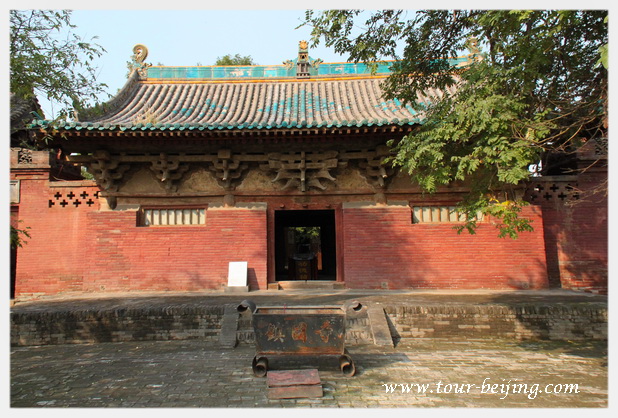
A large bracket holding up the roof and flying eaves in the middle of the Gate (also known as Tianwang)
A dragon head atop the flying eaves on the both sides of the top roof.
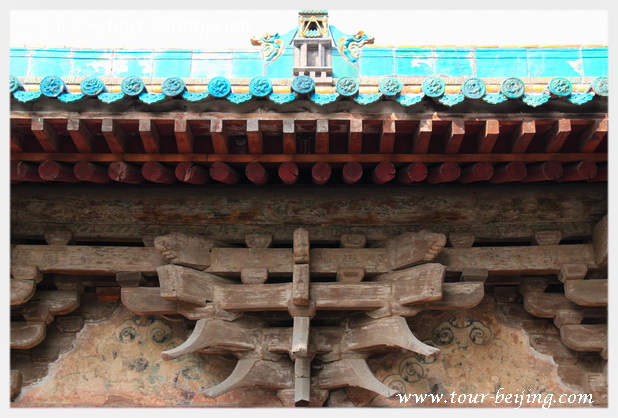
North of Zhenguo Temple is the Wanfo Hall. Wanfo Temple was built in 963, the oldest building in the temple. Inside the hall there are eleven painted sculptures built in Five Dynasties ( 907 – 960) and the frescos of 1000 Buddhas.
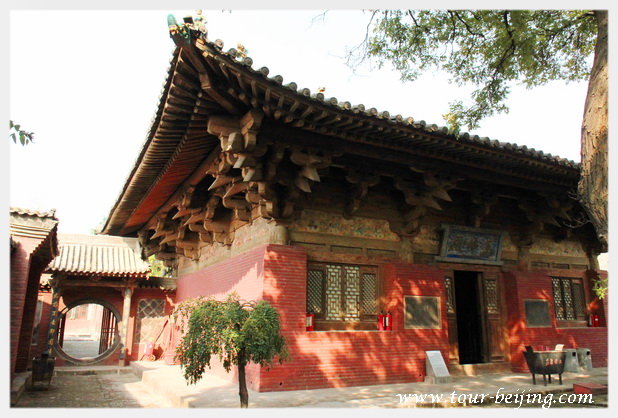
It is one of the oldest wooden structures in mainland China. It differs from other wooden buildings in that it lacks a single nail, making it a gem of ancient Chinese architecture.
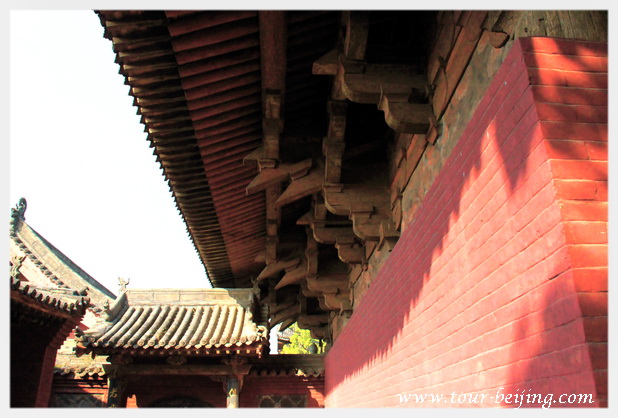
Through the side gates, you can enter the second courtyard north of Wanfo Temple.
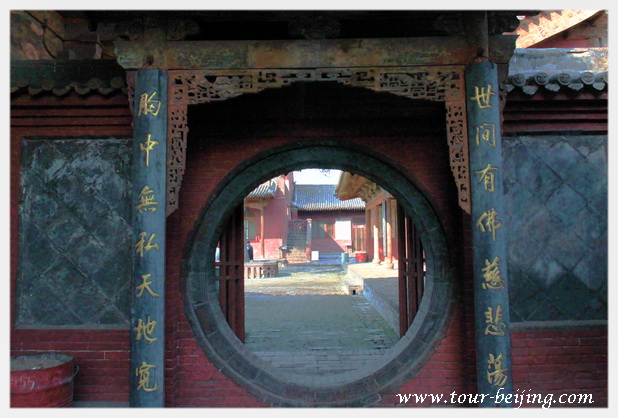
The second courtyard is centered by the main hall known as the Three Buddhas Hall flanked by the Guanyin Hall in the west and Dizang Halls in the east, which both date from the Ming Dynasty ( 1638 – 1644 ).
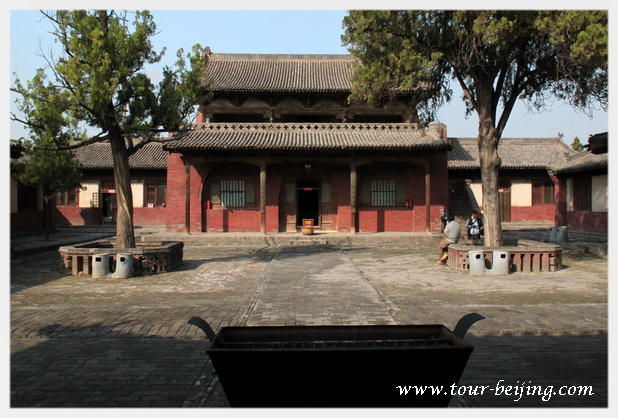
A side brick stair brings you to the second floor of the Three Buddhas Hall.
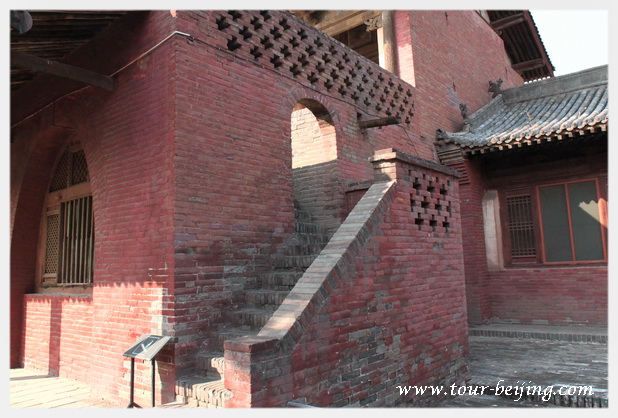
The Three Buddhas Hall was built in Ming Dynasty with painted sculptures and frescos. The life story of the Buddha was represented with well-executed frescos on the two walls.
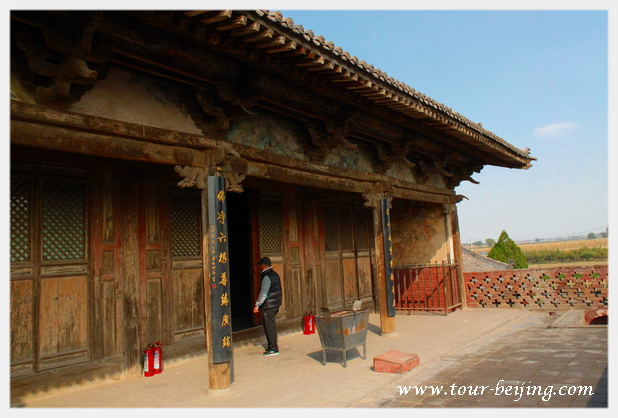
By the entrance stands on the two large painted sculptures.
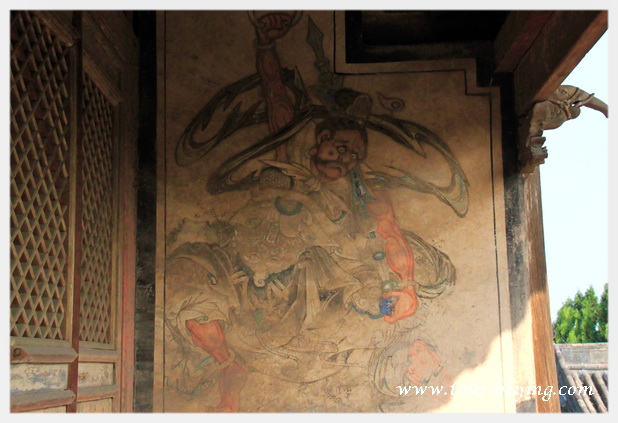
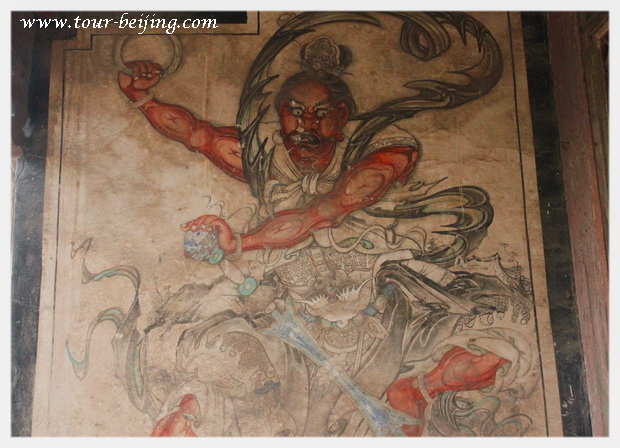
Tip: Hassle-free Pingyao & Shanxi Guided Tours
If you don’t want to do a self-guided tour and prefer the hassle-free escorted tours, here are some options for organized tours to Pingyao and Shanxi Province:
Pingyao Tour
Pingyao Car Rental with Driver
Datong Tour
Datong Car Rental with Driver
Taiyuan Tour
Taiyuan Car Rental with Driver
Further Readings
How to Visit Pingyao
Best Time to Visit Pingyao
What to see in Pingyao
Where to Stay in Pingyao
How to get to Pingyao by bus
How to get to Pingyao by train
Beijing Pingyao High Speed Train
Pingyao Taxi
Visit Qiao Family Courtyard
How to Visit Zhenguo Temple
How to Visit Shuanglin Temple
How to Visit Wang Family Compound
How to Visit Zhangbi Ancient Castle
How to Visit Lijiashan Village (Tips, Photos & Map)
How to Visit Qikou Ancient Town (Tips, Photos & Map)
The Best Place to See Sunrise in Pingyao Ancient City
Any questions, just drop a line.





